Explore Various Testing Methods for Software: A Comprehensive Guide

Are you interested in becoming an expert software tester? If so, it's important to have a good understanding of the various types of testing methods for software. In this article, we'll give you an overview of the different types of software tests, testing methods, and what you need to know to become an expert tester!
Software testing is a method to verify whether the actual product matches the requirements and to ensure that the software product is bug-free. It involves the execution of test cases using manual or automated tools. There are different software levels of testing that are performed throughout the software development life cycle. Each level of testing has a specific objective and helps to ensure that the software product is of high quality and meets the customer's requirements.
Software Testing Hierarchy
There is a hierarchy of software testing

Testing Methodologies & Techniques
Let’s explore what are testing methodologies.
Testing methodologies are the approaches and techniques used to test software applications. These methodologies help to ensure that the software is functioning as expected and meets the specified requirements.
There are different types of software tests and broadly speaking, the methods of software testing can be classified into two categories: Manual and Automation. It's important to make the distinction between manual and automated tests correctly. Let’s explore what are testing
1. Manual Testing
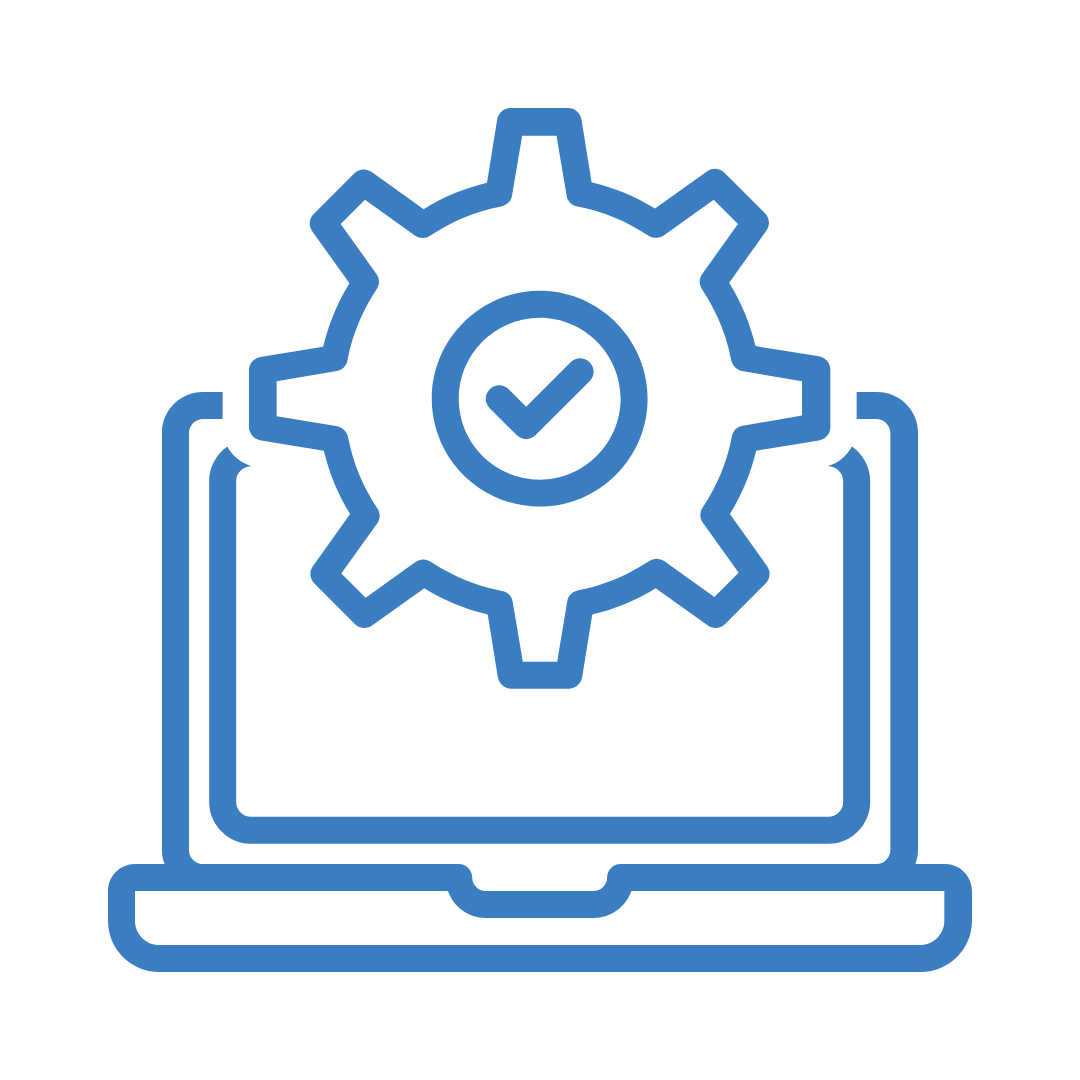
Manual testing is done in person, by clicking through the application, or by interacting with the software. This is very expensive since it requires someone to set up an environment and execute the tests themselves, and it can be prone to human error as the tester might make typos or omit steps in the test script.
2. Automation Testing
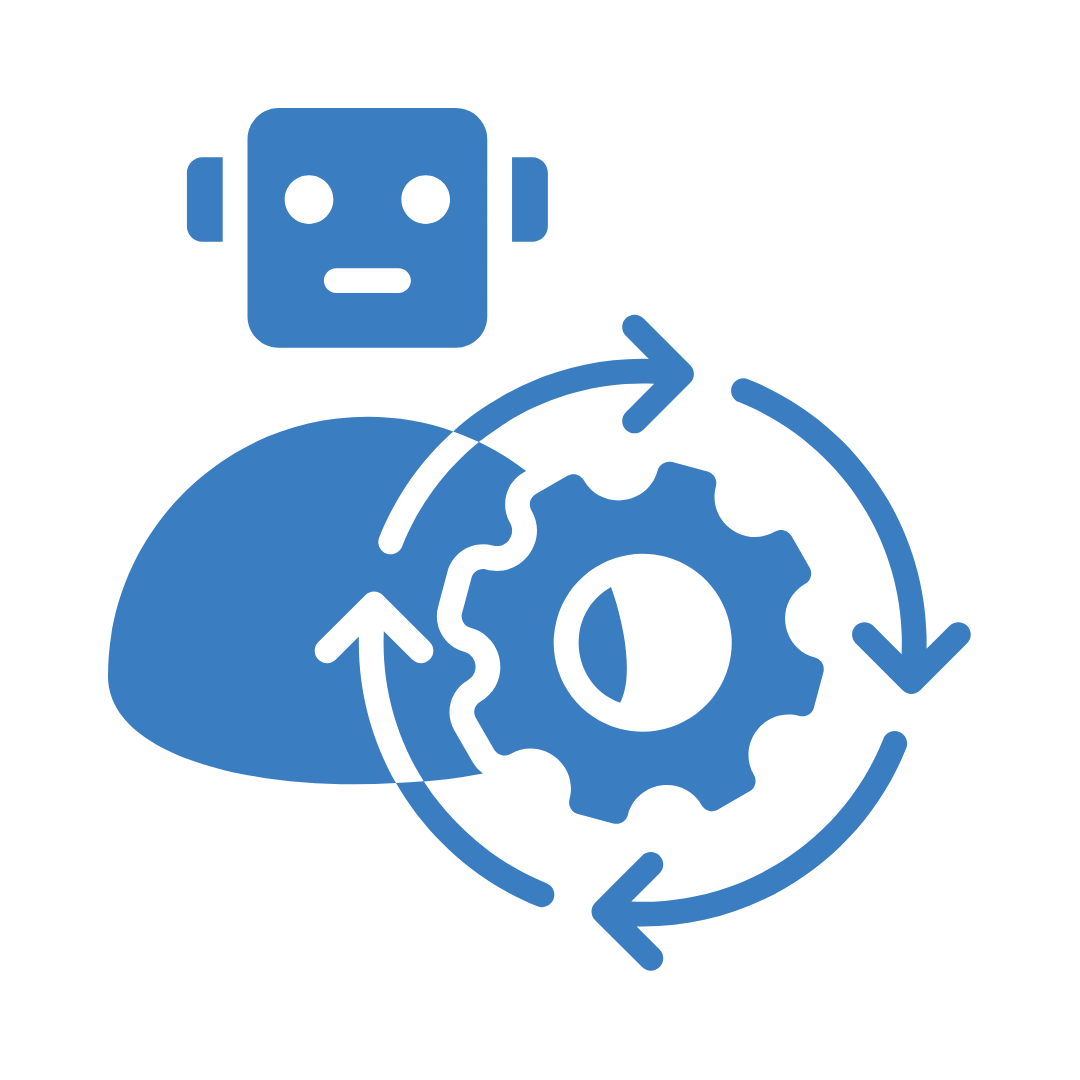
Automated tests, on the other hand, are performed by a machine that executes a test script that was written in advance. These tests can vary in complexity, from checking a single method in a class to making sure that performing a sequence of complex actions in the UI leads to the same results. It's much more robust and reliable than manual tests – but the quality of your automated tests depends on how well your test scripts have been written.
Manual Testing Methods
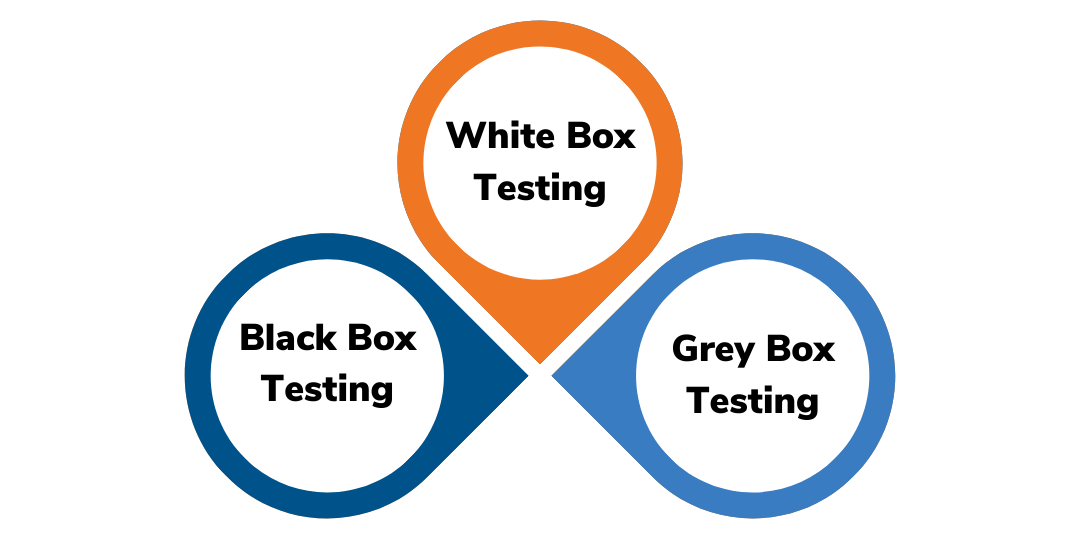
In software testing, manual testing can be further classified into three different types, which are as follows:
- White Box Testing
- Black Box Testing
- Grey Box Testing
1.1 White Box Testing
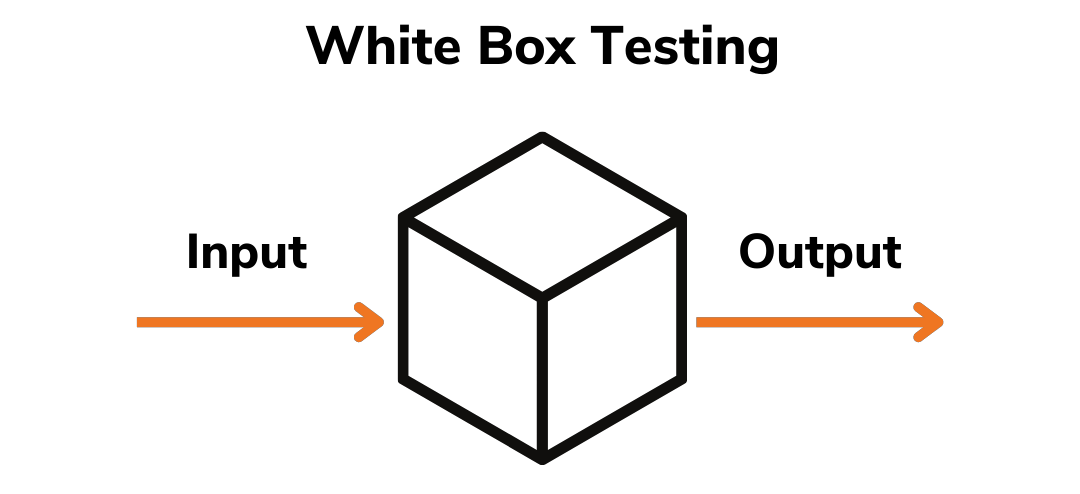
In white-box testing, the developer will inspect every line of code before forwarding it to the QA team. White box testing is also known as open box testing, glass box testing, structural testing, clear box testing, and transparent box testing. This is called White Box testing, as the developer had complete open access to the application and system. The white box tests include:
- Path testing
- Loop testing
- Condition testing and Testing based on the memory perspective
- Test performance of the program
1.2 Black Box Testing
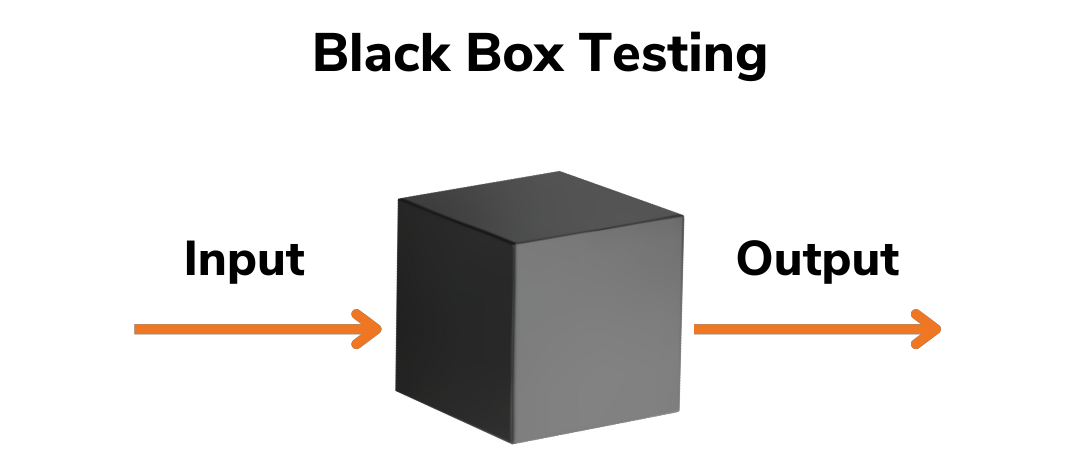
Black box testing is a technique of software testing that examines the functionality of the software without peering into its internal structure or coding. In this method, the tester selects a function, gives an input value to examine its functionality, and checks whether the function is giving the expected output or not. If the function produces the correct output, then it is passed in testing; otherwise, it fails. The test team reports the result to the development team and then tests the next function. After completing the testing of all functions if there are severe problems, then it is given back to the development team for correction. The source code is not visible in this testing; that's why it is known as black-box testing.
1.3 Grey Box Testing
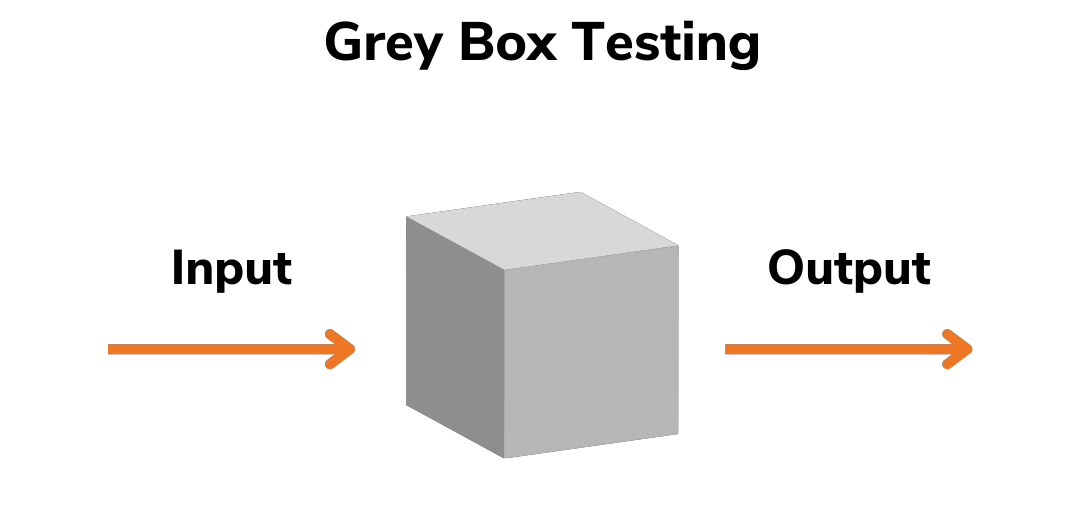
Grey Box Testing is a software testing technique to test a software product or application with only partial knowledge of the internal structure of the application. The purpose of grey box testing is to search for and identify defects due to improper code structure or improper use of applications. In this process, context-specific errors that are related to web systems are commonly identified. It increases the testing coverage by concentrating on all of the layers of any complex system.
In other words, Gray Box Testing is a software testing method, that is a combination of both White Box Testing and Black Box Testing method.
- In White Box testing internal structure (code) is known
- In Black Box testing internal structure (code) is unknown
- In Grey Box Testing internal structure (code) is partially known
Types of Black Box Testing
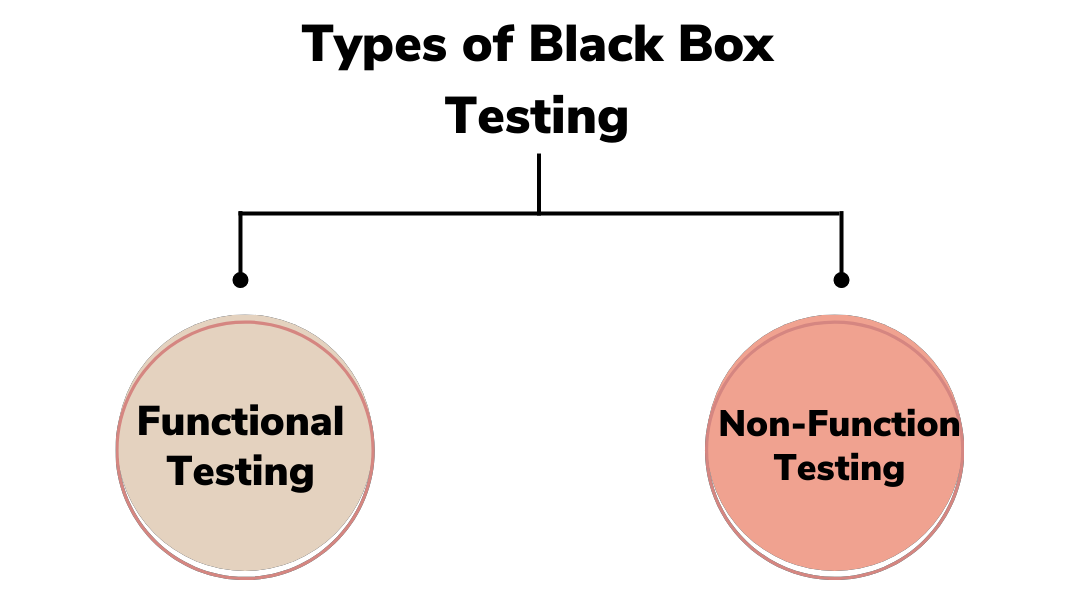
In software engineering, black box testing is an important part of the testing process. Black box testing further categorizes into two types:
- Functional Testing
- Non-function Testing
1.2.1 Functional Testing
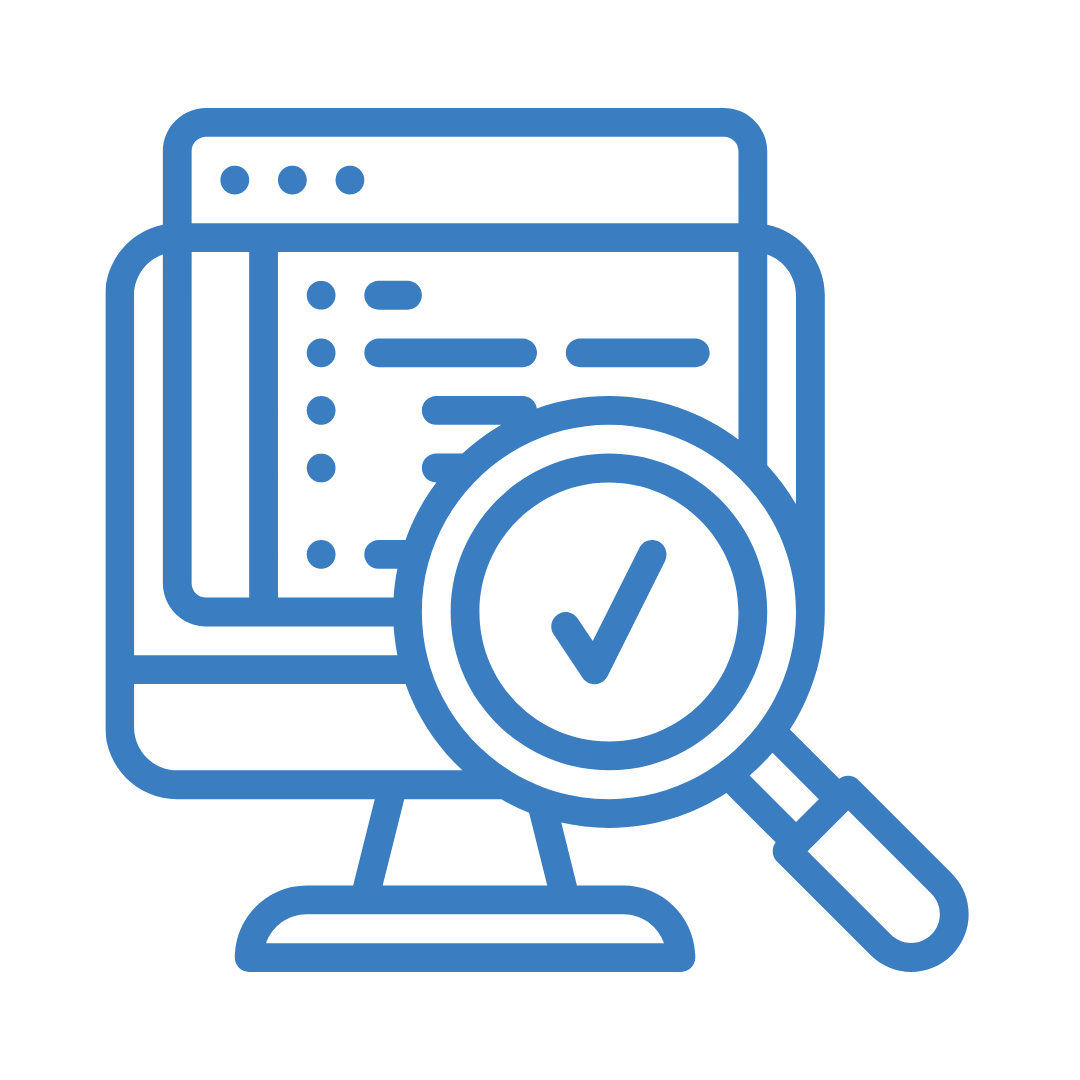
The process by which the test engineer will check all the components systematically against the requirement specifications is known as functional testing. Functional testing is also known as Component testing. In functional testing, all the components are tested by giving the value, defining the output, and validating the actual output against the expected value. Functional testing is a part of black-box testing as it emphasizes application requirements rather than actual code. Functional testing is normally performed during System Testing and Acceptance Testing.
Types of Functional Testing
functional testing type
- Unit Testing
- Integration Testing
- System Testing
Unit Testing
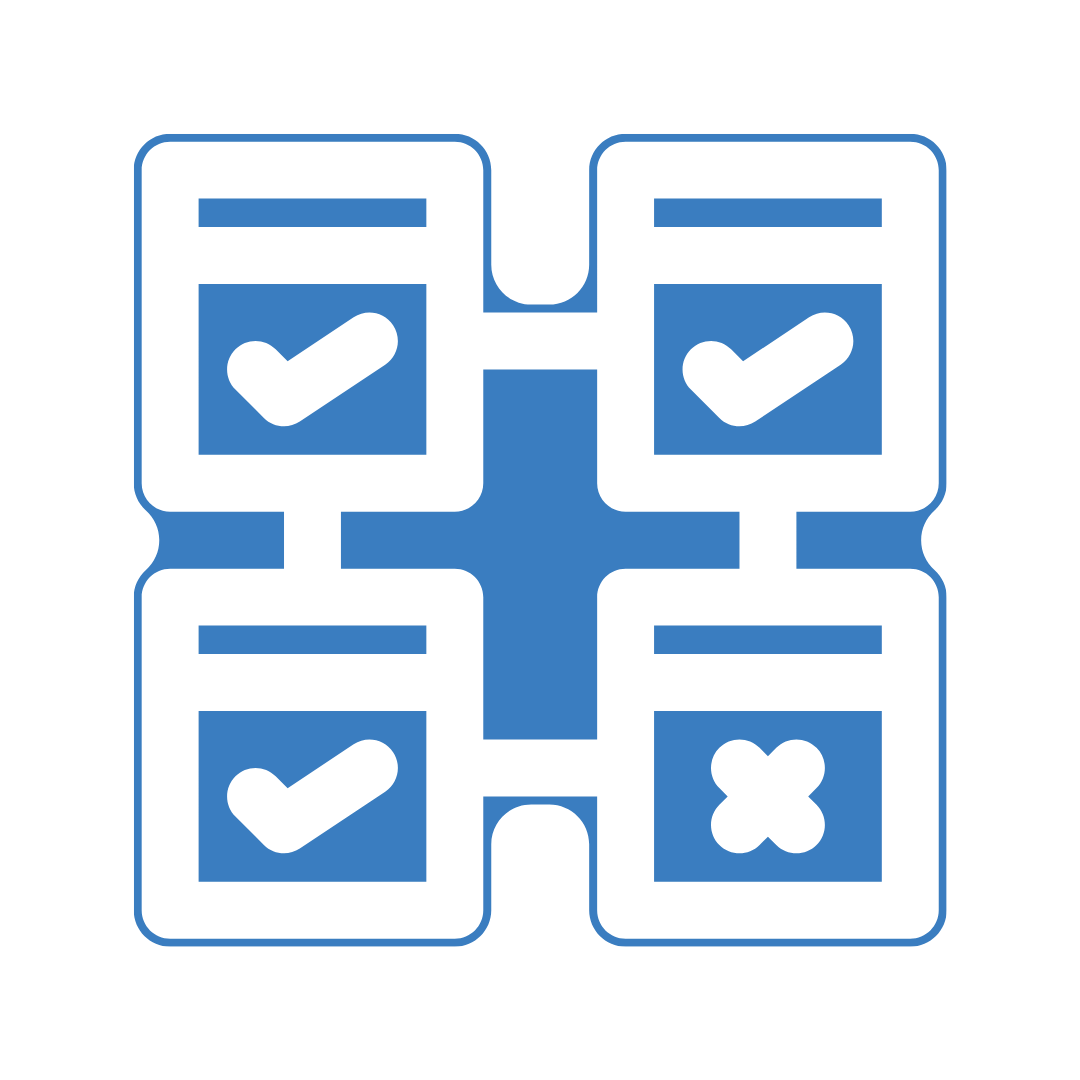
Unit test in software engineering is the first level of functional testing needed to test any software. Here, the test engineer will test each module of an application independently, or all the module functionality. This is called unit testing software development.
Some reasons are listed below:
- Unit testing helps testers and developers to understand the base of code which makes them able to change defects causing code quickly.
- Unit testing helps in the documentation.
- Unit testing fixes defects very early in the development phase that's why there is a possibility to occur a smaller number of defects in upcoming testing levels.
- An example of unit test is that it helps with code reusability by migrating code and test cases.
Integration Testing
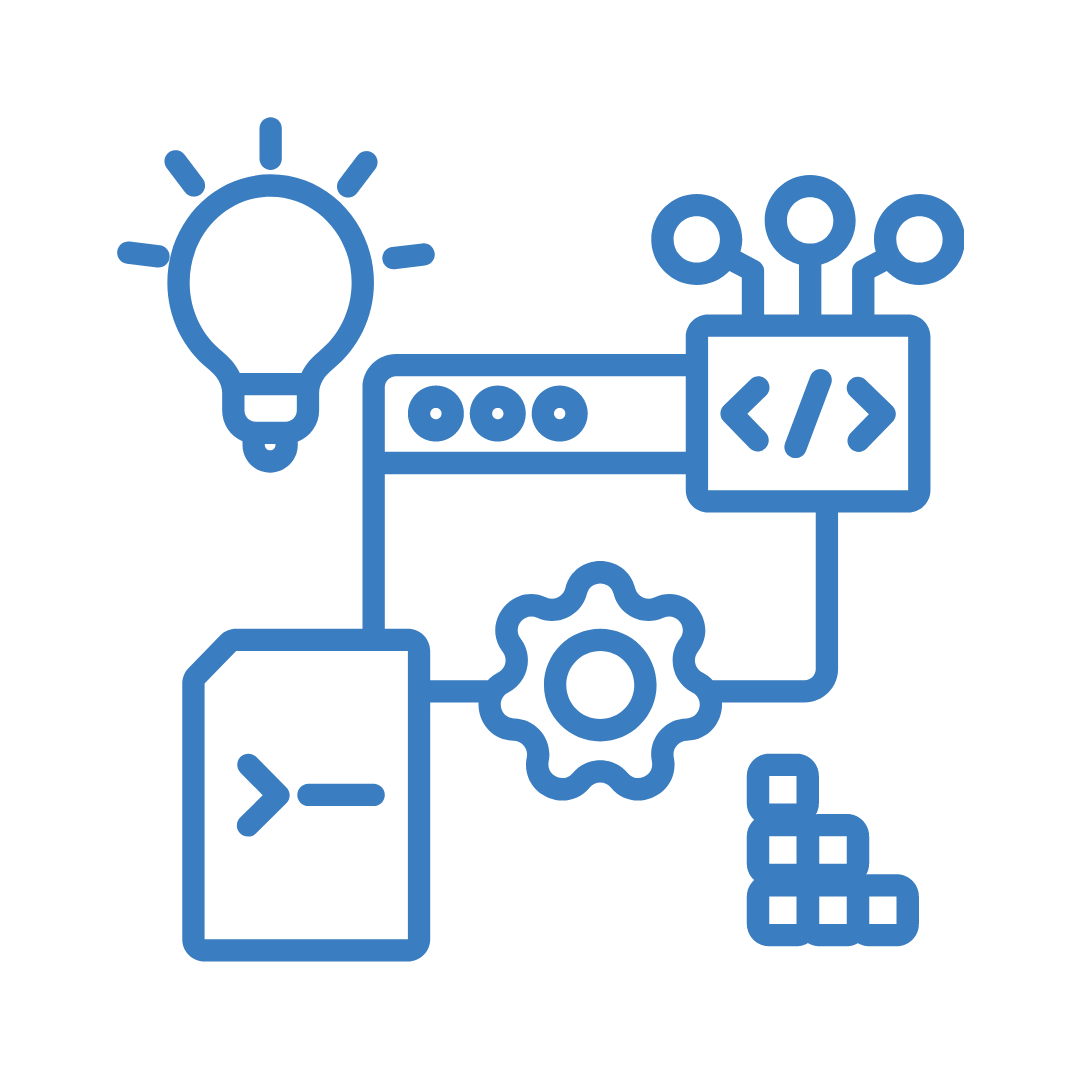
Now let’s see what is integration testing in software testing!
Once we have successfully implemented the unit testing, we will move to integration testing. It is the second level of functional testing, where we test the data flow between dependent modules or the interface between two features.
Types of integration testing:
- Top-down (Incremental Integration Testing)
- Bottom-up (Incremental Integration Testing)
System Testing
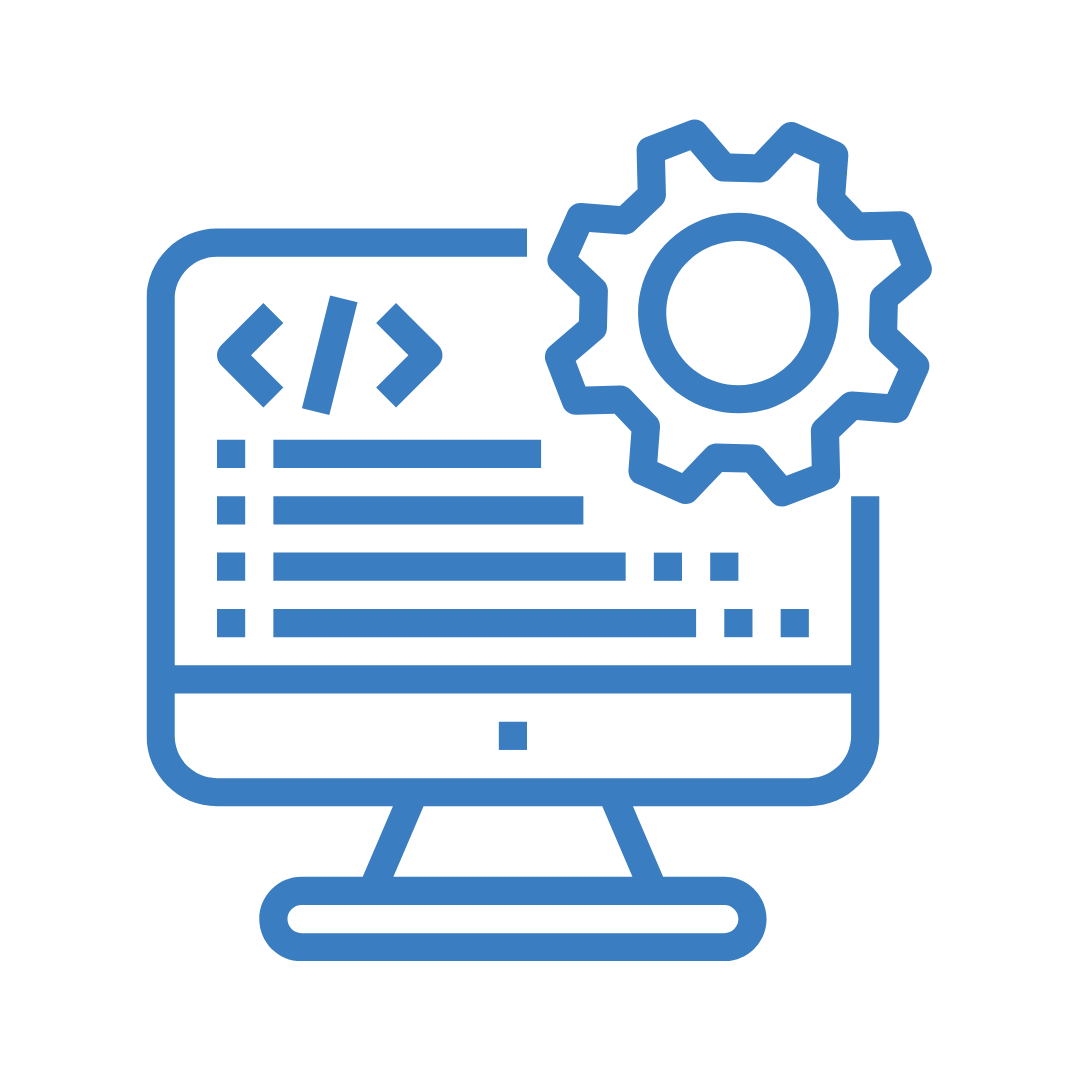
After we are done with the unit and integration testing, we will proceed to the system testing. In system testing, the test environment is parallel to the production environment. It is also known as " end-to-end testing”. In this type of testing, we will undergo each attribute of the software and test if the end feature works according to the business requirement and analyze the software product as a complete system.
System Testing includes the following steps:
- Verification of input functions of the application to test whether it is producing the expected output or not.
- Testing of integrated software by including external peripherals to check the interaction of various components with each other.
- Testing of the whole system for End to End testing.
- Behavior testing of the application via a user's experience
1.2.2 Non-Functional Testing
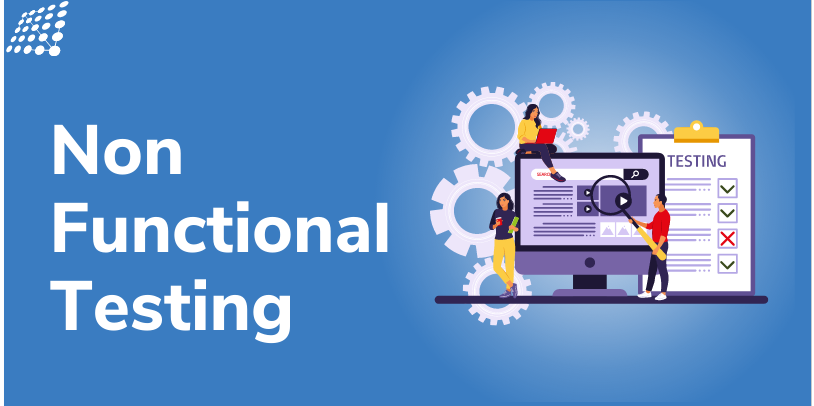
Non-functional testing will help us minimize the production risk and related costs of the software. Non-functional testing is a combination of performance, load, stress, usability, and, compatibility testing. Let’s look at types and examples of non-functional testing.
Types of Non-Functional Testing
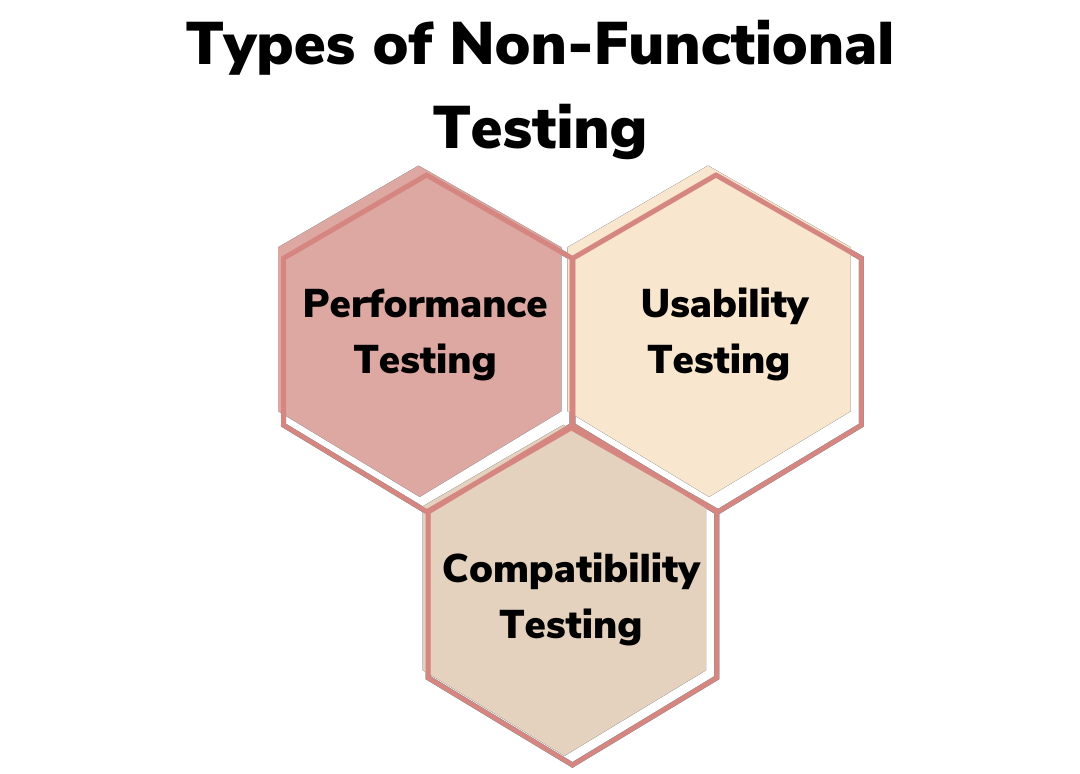
These are the types of Non-Functional testing:
- Performance Testing
- Usability Testing
- Compatibility Testing
Performance Testing
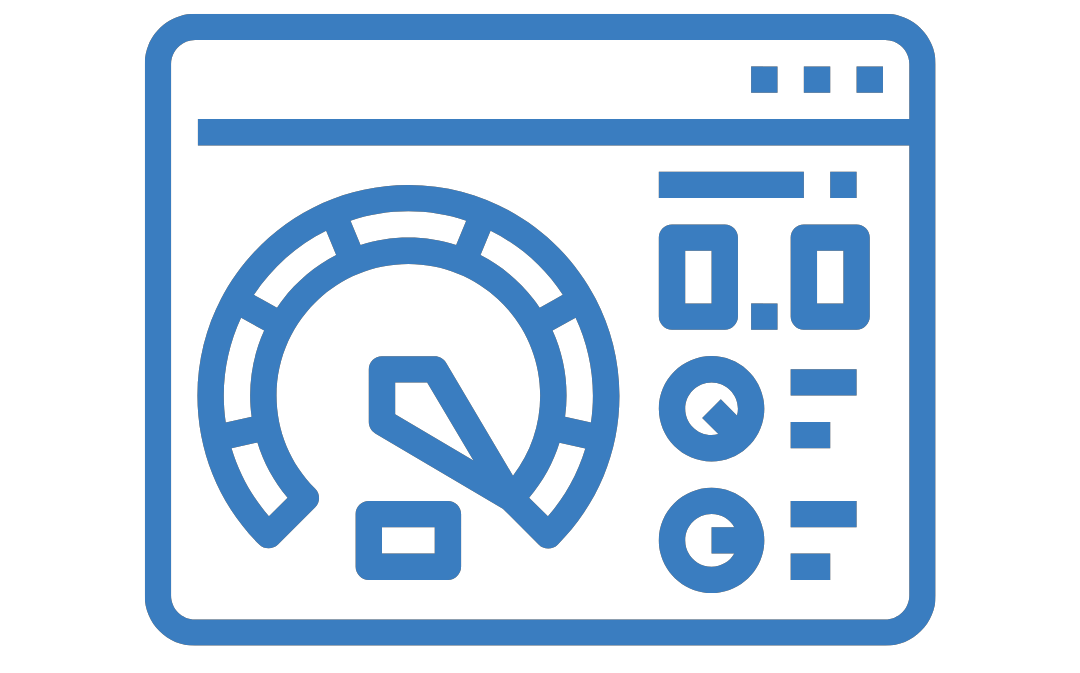
For performance testing of software, the test engineer will test the performance of an application by applying some load. Here, the test engineer will only focus on several aspects, such as response time, load, scalability, and stability of the software or application.
Classification of Performance Testing:
There are different types of performance testing. Performance testing includes various types of testing, which are as follows:
- Load Testing
- Stress Testing
- Scalability Testing
- Stability Testing
Load Testing

While executing performance testing, we will apply some load to the particular application to check the application's performance, known as load testing. Here, the load could be less than or equal to the desired load. The software load test will help us detect the highest operating volume of the software and bottlenecks.
Stress Testing
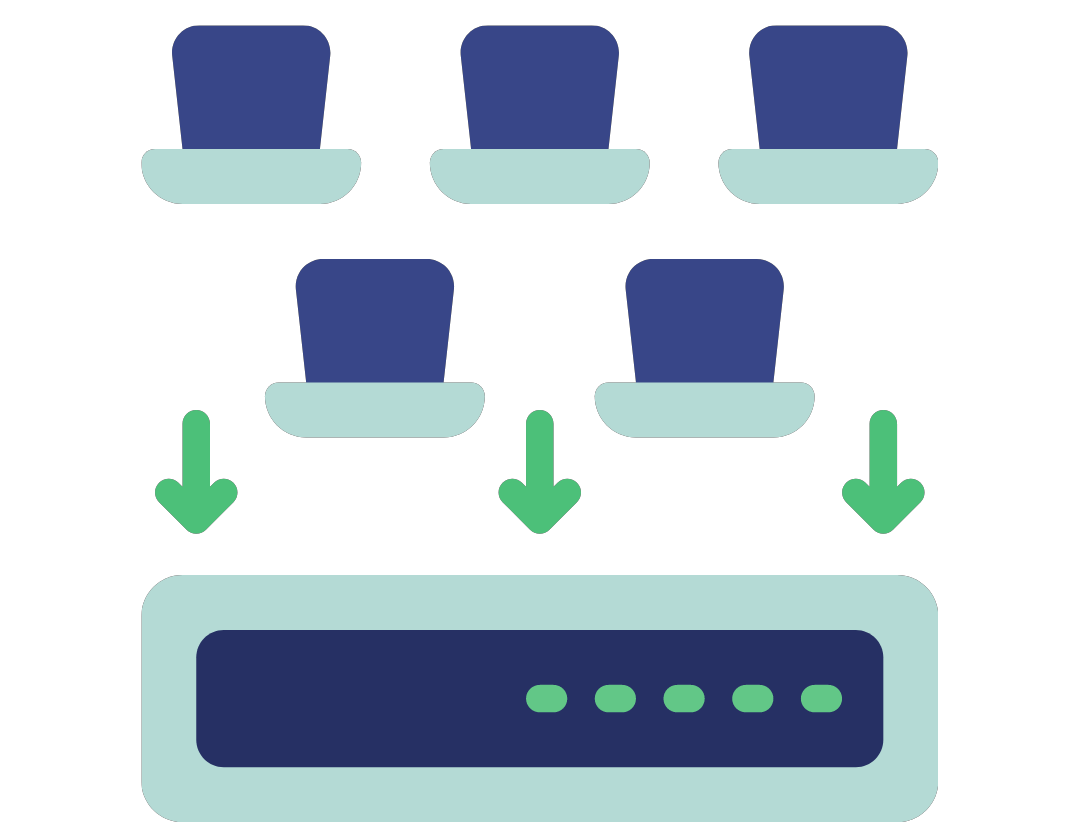
Stress testing of software is used to analyze the user-friendliness and robustness of the software beyond its common functional limits. Primarily, stress testing is used for critical software, but it can also be used for all types of software applications.
Scalability Testing
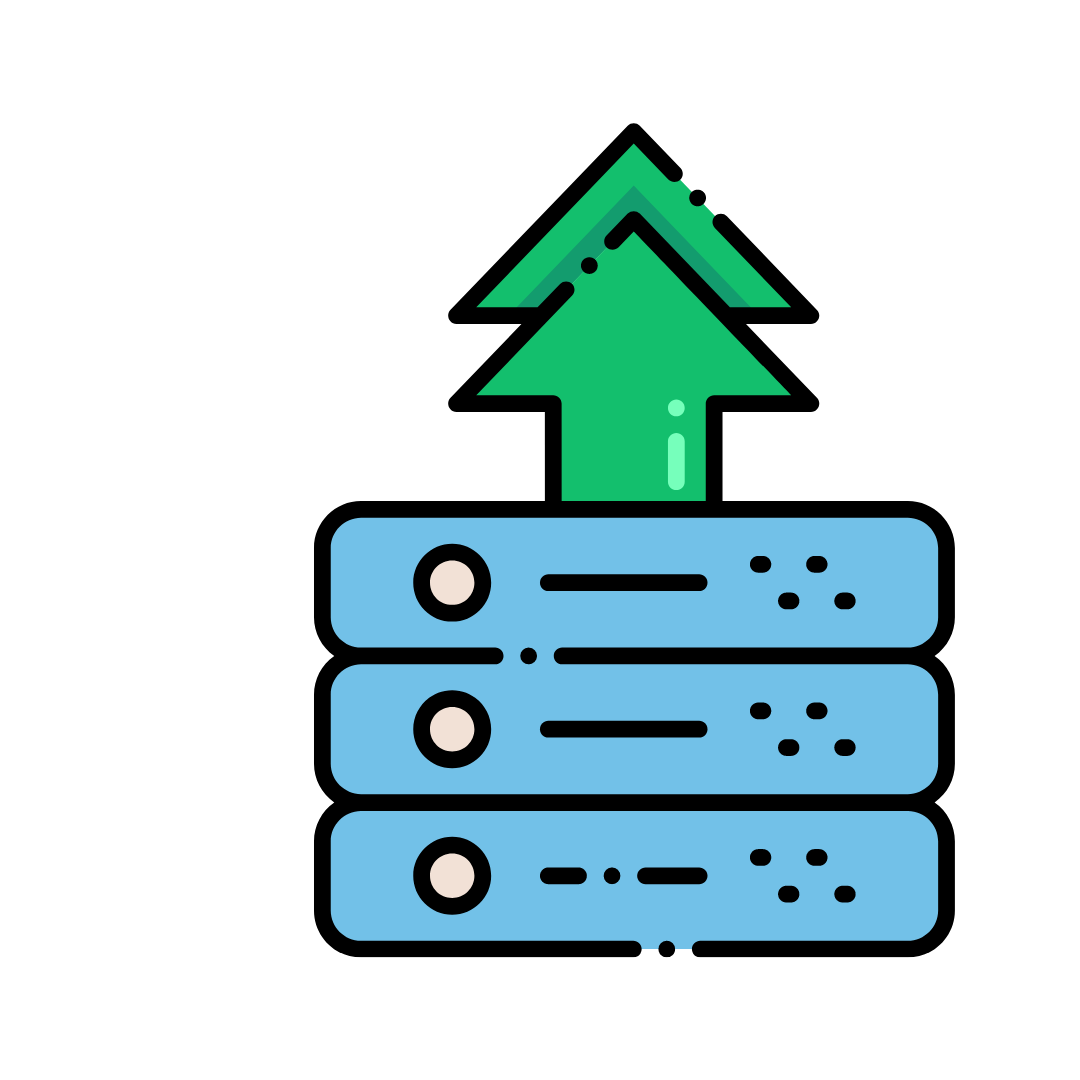
To analyze, the application's performance by enhancing or reducing the load in particular balances is known as scalability testing. In scalability tests, we can also check the system, process, or database's ability to meet an increasing need. Here, the test cases are designed and implemented efficiently.
Stability Testing

Stability testing is a procedure where we evaluate the application's performance by applying a load for a precise time. It mainly checks the consistency problems of the application and the efficiency of a developed product. In this type of testing, we can rapidly find the system's defect, even in a stressful situation.
Usability Testing
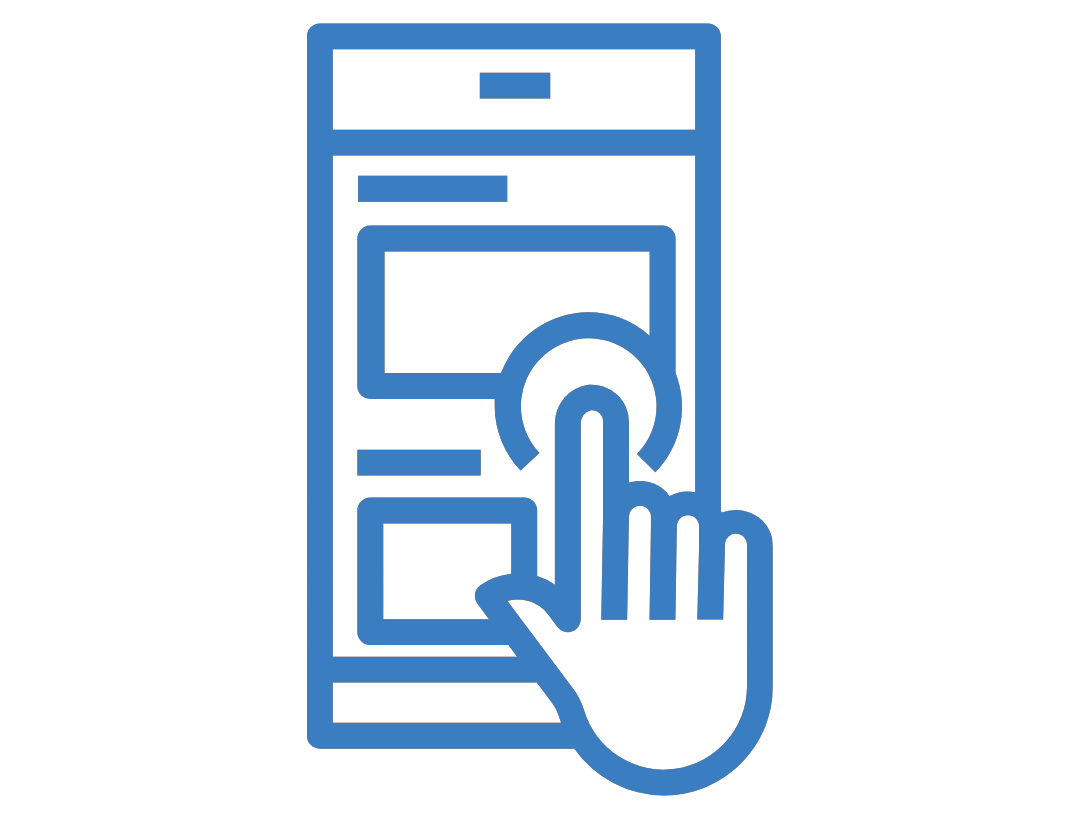
In software for usability testing, we will analyze the user-friendliness of an application and detect bugs in the software's end-user interface. Here, the term user-friendliness defines the following aspects of an application:
- The application should be easy to understand, which means that all the features must be visible to end-users.
- The application's look and feel should be good which means the application should be pleasant looking and make a feel for the end-user to use it.
There are different tools for usability testing.
Compatibility Testing
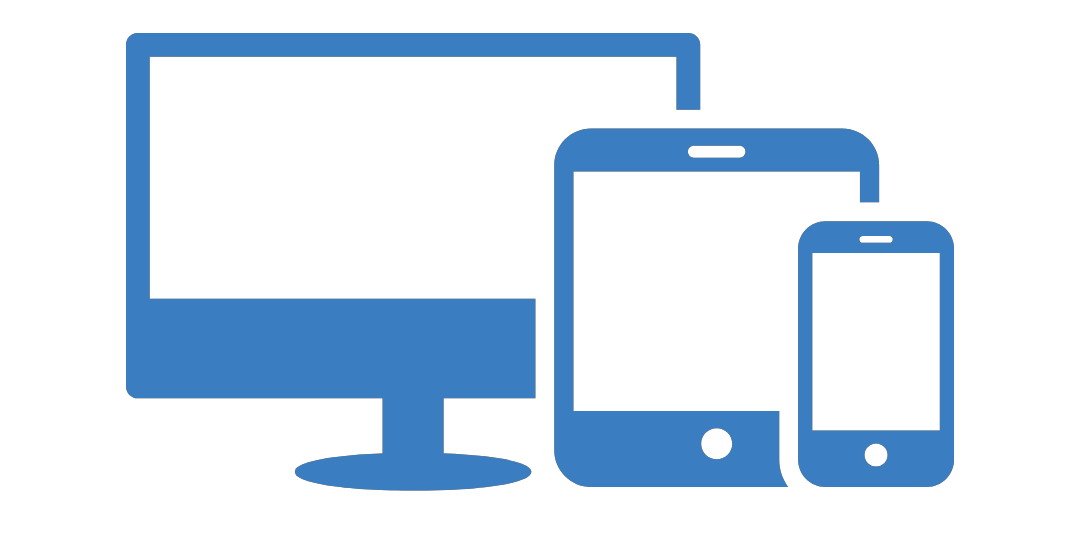
In compatibility testing, we will check the functionality of an application in specific hardware and software environments. Once the application is functionally stable, then and only then can we go for compatibility testing. Here, software means we can test the application on different operating systems and other browsers, and hardware means we can test the application on different sizes.
Some other types of Software Testing
There are different types of software tests. We also have some other types of testing that are not part of any of the above-discussed testing, but those tests are required while testing any software or an application.
- Smoke Testing in software
- Sanity Testing
- Regression Testing
- User Acceptance Testing
- Exploratory Testing
- Adhoc Testing
- Security Testing
- Globalization Testing
Smoke Testing
In software smoke testing, we will test an application's basic and critical features before doing one round of deep and rigorous testing. Analyzing the workflow of the application's core and main functions is the main objective of performing smoke testing in QA.
Sanity Testing
Software sanity testing is used to ensure that all the bugs have been fixed and no added issues come into existence due to these changes. Sanity testing is unscripted, which means we cannot document it. It checks the correctness of the newly added features and components.
Regression Testing
Wondering what’s regression analysis? A software regression test is the most commonly used type of software testing. Here, the term regression implies that we have to re-test those parts of an unaffected application. Regression testing is the most suitable testing method for automation tools. As per the project type and accessibility of resources, regression testing can be similar to retesting.
User Acceptance Testing
User acceptance testing (UAT) is done by an individual team known as the domain expert/customer or client. The definition of user acceptance testing is knowing the application before accepting the final product.
Exploratory Testing
Exploratory testing in software testing becomes crucial especially for important applications. When requirements are missing or there is a need for early iterations, having an experienced testing team helps. So how to do exploratory testing? When conducting exploratory testing, an exploratory tester needs to first thoroughly explore the application in every possible way. Next, document the testing approach, and gain a deep understanding of the application's flow before executing tests. By taking these steps, you can ensure comprehensive testing and deliver a high-quality product.
Adhoc Testing
Testing the application randomly as soon as the build is in the checked sequence is known as ad hoc testing. It is also called monkey testing or gorilla testing. For ad hoc tests, we check the application in contradiction to the client's requirements; that's why it is also known as negative testing.
Security Testing
Security testing in software is immensely important as it is used to determine the weaknesses, risks, or threats in the software application. The execution of a software security test will help us to avoid nasty attacks from outsiders and ensure our software applications' security.
Globalization Testing
Another type of software testing is globalization testing. Globalization testing is used to check whether the developed software is multilingual or not. Here, the word globalization means enlightening the application or software for various languages. Globalization testing is used to make sure that the application will support multiple languages and multiple features.
I've given a thorough overview of the most often used software testing types in this post, including regression testing, ad hoc testing, functional testing, non-functional testing, and black-box testing. Different organizations may use different classifications or techniques, but the fundamental idea is the same everywhere. It's important to note that various testing kinds, techniques, and execution methods can change according to the project's scope, requirements, and timetable. By understanding these subtilities, you can become a more versatile and effective software tester.
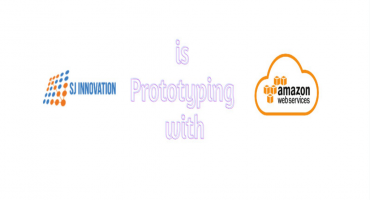
Prototyping Personalized E-Commerce with Amazon Web Services [AWS]

A Beginner’s Guide to Deploy a Super-Fast Website on Nelify or Github within Minutes


